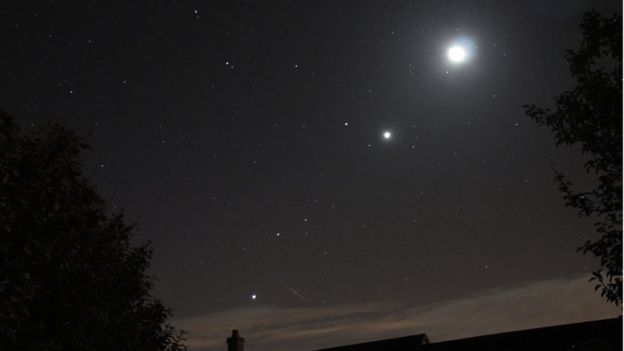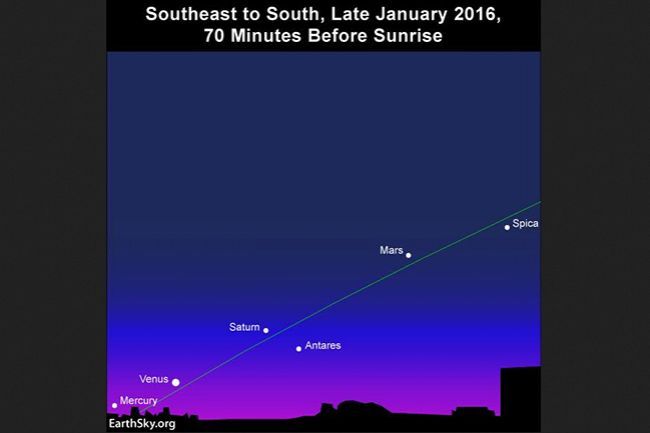
The five visible planets – Mercury, Venus, Mars, Jupiter and Saturn – are about to align and will appear sitting in a line from the horizon to the moon from January 20, until February 20
The last time all five of the bright planets appeared in the same sky together was from Dec. 15, 2004, to Jan. 15, 2005.
According to the Guardian:

BYPASS THE CENSORS
Sign up to get unfiltered news delivered straight to your inbox.
You can unsubscribe any time. By subscribing you agree to our Terms of Use
This time around, the five visible planets will appear simultaneously in the predawn sky from about Jan. 20 to Feb. 20. Four of the five (Mercury, Venus, Saturn and Mars) will appear in the southeast-south region of the pre-dawn sky, stretching in a rough line from the lower left to upper right (the ecliptic), and will be visible about 70 minutes before sunrise. Venus will be the easiest to spot (it is the brightest of the four). Mercury will be visible (after Jan. 20) to the lower left of Venus, close to the horizon.
Moving up the line to the right from Venus, golden Saturn sits in all its celestial splendour. Venus and Saturn will be fairly close to one another during the first half of January. On the morning of Jan. 9, the two planets will stage a particularly close conjunction, the closest coupling of two planets since March 2013. Watch the waning crescent moon slide past Venus and Saturn before sunrise, both today and tomorrow.
Continuing further up the line, you will spot Mars. Though reasonably bright right now, Mars will, in May, shine as brightly as Jupiter does at present. Use binoculars to distinguish the differences in colour between the ruddy-coloured Mars and blue-white Spica, the brightest star in the constellation Virgo – the Maiden, which sits fairly close to the upper right of the Red Planet.
The fifth visible planet visible in the pre-dawn sky, Jupiter, sits in the southwest, having risen in the east before midnight at the beginning of January and around mid-evening (9 p.m.) by month’s end. Look for the waning crescent moon close to Jupiter on the mornings of Jan. 26-27.


